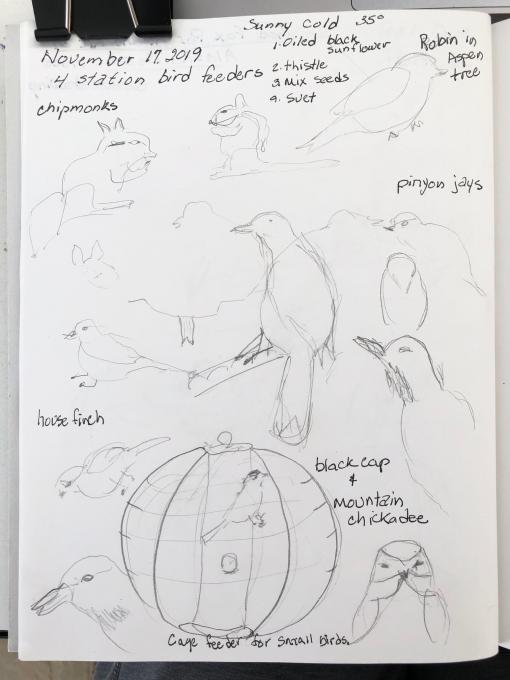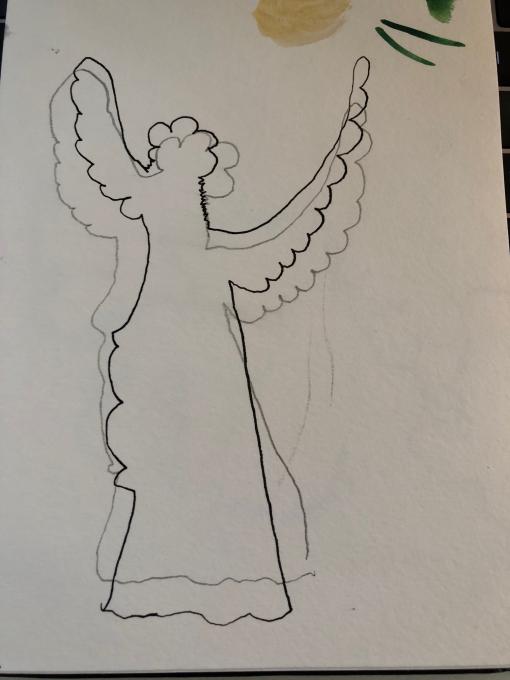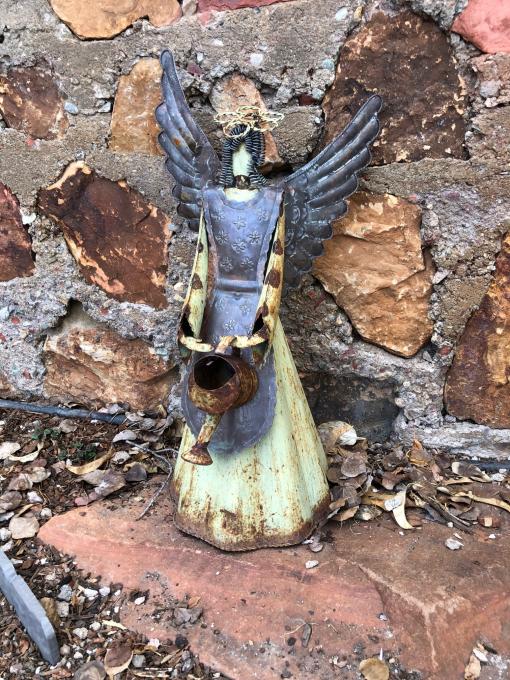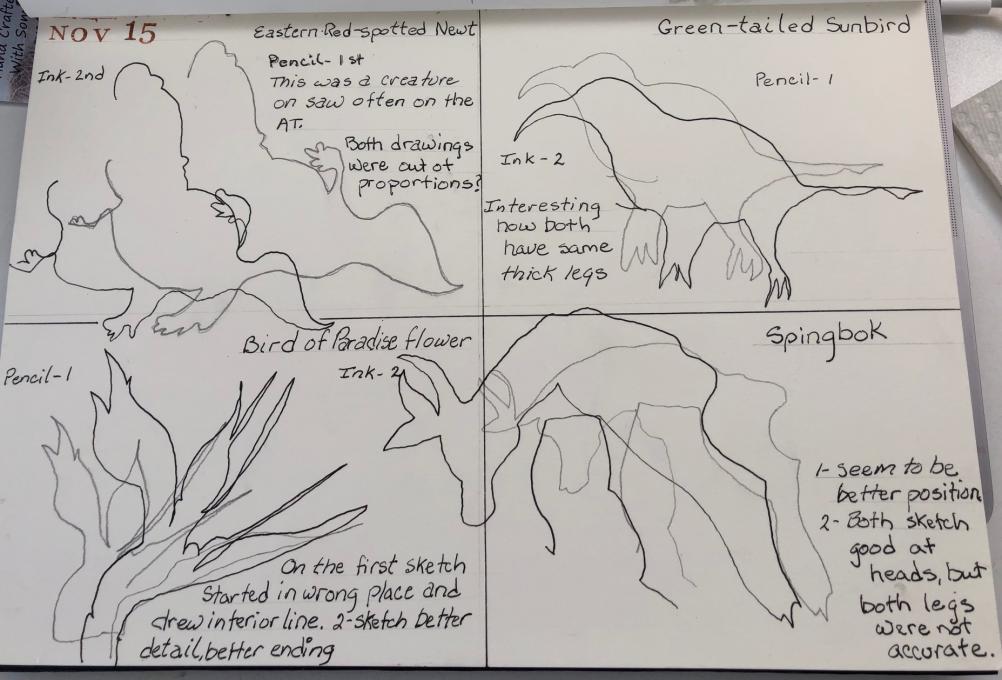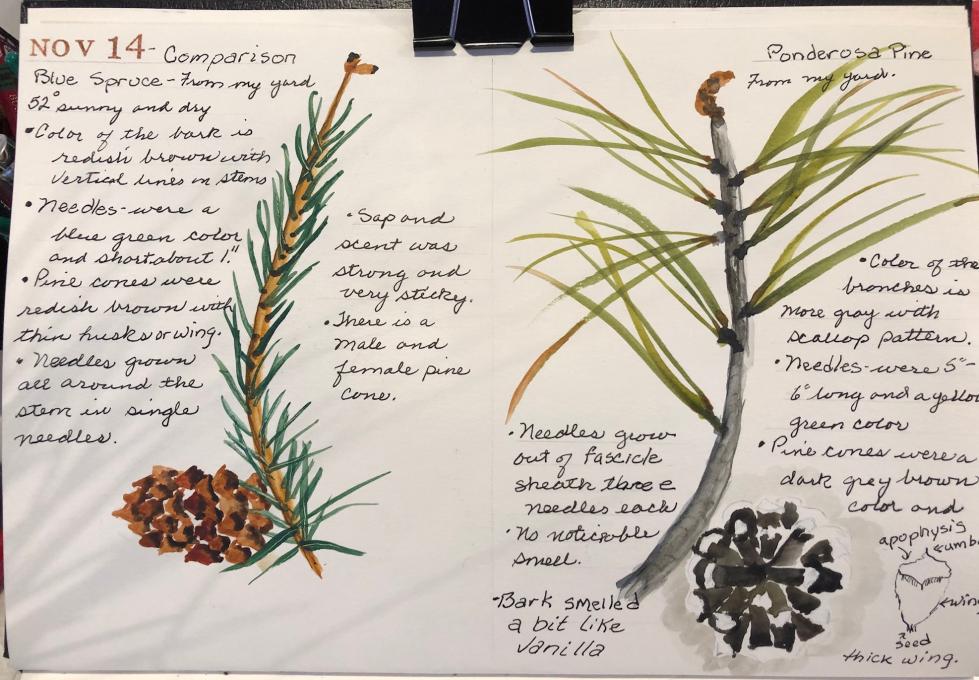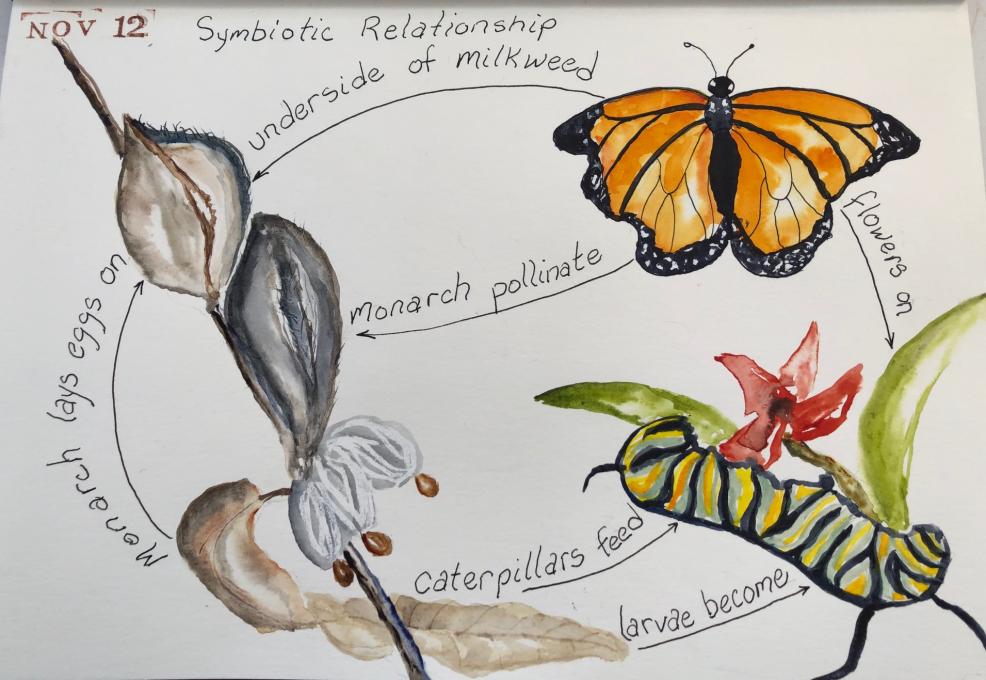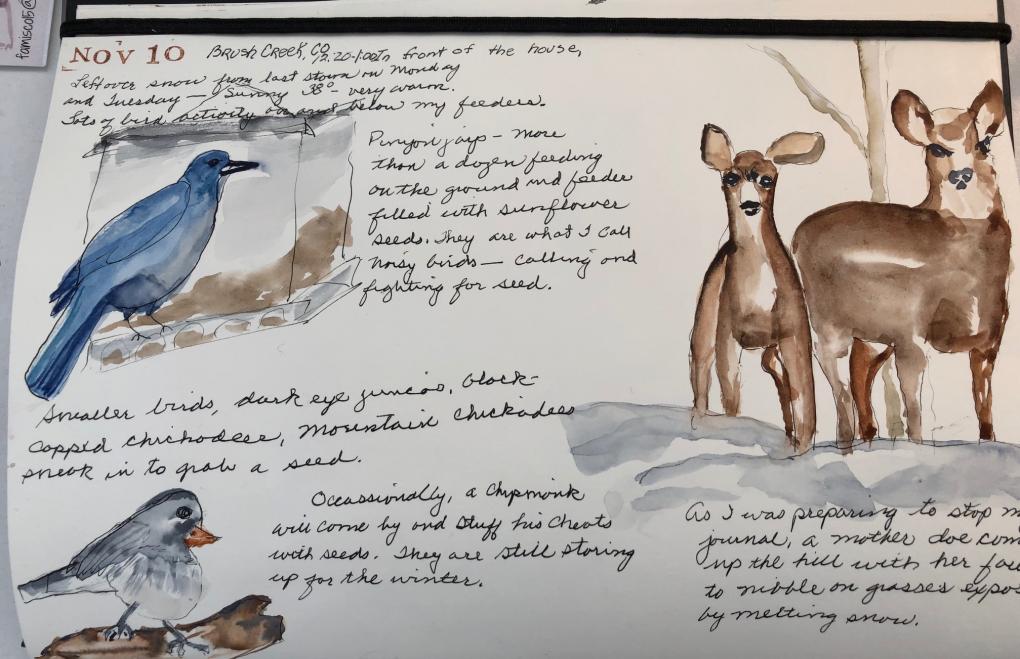Mary
Forum Replies Created
Viewing 7 posts - 1 through 7 (of 7 total)
-
MaryParticipantThis was a very difficult exercise for me. All of the animals around my feeders move at super fast speed. I found just sitting in a cold sunny spot was as enjoyable as trying to capture the critters on paper. I agree with others it would be better to have ducks, Canada geese and bigger subjects to observe and draw. The sun is also a factor. It is easier to have the sun at your back. Having access to a nature area or preserve would also be of help. It all takes practice. The suggestion of watching a nature cam was a good one. In our area there is an osprey cam, but I will have to wait until next spring to watch.
 in reply to: Capturing Behavior – Gesture Drawing #649268
in reply to: Capturing Behavior – Gesture Drawing #649268 -
MaryParticipantSince it is winter in my area, there are very few plants other above ground. I chose an garden art object to do an contour drawing. Again it was not an easy sketch, but fun to do.

 in reply to: Focusing on Your Subject – Blind Contour Drawing #649194
in reply to: Focusing on Your Subject – Blind Contour Drawing #649194 -
MaryParticipantWorking through this lesson, made me realize that I could use more practice in eye/hand coordination. What was interesting was that after I worked with a pencil and then ink that using both tools my sketches seem to have the same distortions. I could tell that the sketches did resemble the provided photos.
 in reply to: Focusing on Your Subject – Blind Contour Drawing #649193
in reply to: Focusing on Your Subject – Blind Contour Drawing #649193 -
MaryParticipantThis exercise made for way more questions. I took two samples from our yard of pine trees. They were very different and provided lots of points of comparisons. When I went to identify them, it was not so easy. As it turns out there are a lot of pine trees in the state of Colorado. I identified them as Blue Spruce and Ponderosa Pine, but there were also other pines they might have been i.e. Scotch Pine. When I googled Ponderosa Pine it mentioned that the bark might smell like vanilla or butterscotch. Sure enough when I scrapped the bark it smelled like vanilla. (Power of suggestion?) The Blue Spruce did have a distinctive smell. Did that come from the needles or sap? I do enjoy trying to render these exercises in watercolor. I think my blue spruce needles could have used a little more blue in the green. I also enjoyed learning the names for the different parts of the pinecones and needles.
 in reply to: The Power of Comparison #649140
in reply to: The Power of Comparison #649140 -
MaryParticipantOn one of my walks on a bike trail, I found a Milkweed seed pod. From one of the pods were still three seeds that appear like parachutes ready to launch in the next strong wind. From this dried flower, I wanted to find out what fed on this plant and how it fit in the cycle of life. It became how important this plant was to the Monarch butterfly that is on decline. I plan on continuing my research to see about planting this flower. I know it can be poison to animals if eaten in great amounts, but I do not have domestic animals and would like to encourage butterflies. What other plants can I plant that will help wildlife?
 in reply to: Noticing Themes in Nature #649087
in reply to: Noticing Themes in Nature #649087 -
MaryParticipantThis sketch was done in my front yard where I have a four station feeding station for birds. These include: niger thistle, oiled black sunflower seeds, a small bird cage feeder, and suet. I observed that the very agressive pinyon jays rake sunflower seeds out of the feeder where ground-feeder birds can get. The jays fly and hide seeds around the property. Then I noticed that the chickadees and other small manmals would dig up the hiden seeds. It is interesting to see how these are interrelated. I feel honored that I live in a place where nature can come and visit. As winter approaches, it is interesting to see how animals prepare along with us. I look forward to seeing how others observe nature.
 in reply to: Opening Your Senses #649079
in reply to: Opening Your Senses #649079 -
MaryParticipantHappy Halloween to all.
 in reply to: Illustrating the 3D World #648311
in reply to: Illustrating the 3D World #648311
Viewing 7 posts - 1 through 7 (of 7 total)
